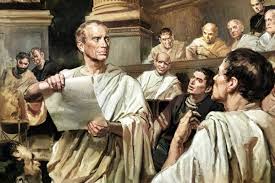Drawing up a collective agreement: the legal art of balancing interests
In the business world, where the interests of employers and employees often seem to be at odds, collective agreements provide a unique tool for harmonization. This is not just a document, but a kind of constitution of the enterprise, establishing a balance of rights and obligations. Drafting a collective agreement is a legal art that requires an understanding of the law, the intricacies of labor relations and diplomatic skills.
Unlike individual contracts, where the terms are often dictated by the employer, a collective agreement is the result of negotiations. Here it is not enough to know how to conclude a contract technically. It is important to understand the psychology of both parties, their needs and concerns. For example, employees may seek greater flexibility in working hours while the employer is concerned about productivity. The lawyer’s task is to find wording that will satisfy both.
The process of concluding a collective agreement usually begins at the initiative of a trade union or work collective. They form a list of requirements and proposals. The important thing to remember here is that while legally you can include almost anything, in practice demands that are too radical can derail negotiations. Contract rules advise focusing on realistic, reasonable clauses.
The next stage is the development of documents. This is not only the agreement itself, but also related papers: minutes of meetings, letters of demand, drafts of individual sections. At this stage, the lawyer must comply with clear requirements for the execution of contracts. For example, each point must be formulated unambiguously, without the possibility of double interpretation. Avoid phrases like “if possible” or “subject to availability of funds” - they make the obligations vague.
Interestingly, experience in drafting and executing contracts in other areas can be useful. For example, skills in drawing up land lease agreements will be useful when working on the section of a collective agreement on social guarantees. Land contracts often refer to long-term obligations and their indexation for inflation - the same principles apply when determining mechanisms for increasing wages.
The key point in drawing up a collective agreement is structure. Typically the document includes the following sections:
1. General provisions (validity period, scope of application)
2. Labor relations (schedules, vacations, advanced training)
3. Remuneration (tariffs, allowances, bonuses)
4. Labor protection (safety, medical examinations, compensation)
5. Social guarantees (help, vouchers, education for children)
6. Guarantees for the activities of the trade union
7. Final provisions (control, responsibility of the parties)
When drawing up a contract, each section requires special attention. For example, in the part about wages, it is not enough to simply indicate the amounts. It should be described in detail how they are calculated, when they are paid, and what bonuses there may be. In the section on labor protection, it is important not only to list safety measures, but also to identify responsible persons and control procedures.
Particular attention should be paid to provisions relating to changes in the real estate of the enterprise. For example, if a company is planning to renovate or redesign its offices, this may affect working conditions. In this case, the collective agreement should include clauses on the temporary movement of workers, compensation for inconvenience, or even the possibility of remote work.
When drawing up a contract, a lawyer must take into account the specifics of the industry and the enterprise. For example, an IT company may pay more attention to issues of intellectual property and confidentiality, while at a factory the key issues will be safety and compensation for hazardous conditions.
An important aspect is the compliance of the collective agreement with current legislation. The principle applies here: a contract can expand the rights of workers, but not narrow them. For example, you cannot set the duration of vacation less than that provided by the Labor Code, but you can increase it.
Special mention should be made about the language and style of the document. Although a collective agreement is a legal text, it must be understood by all employees. Avoid excessive use of legal terminology. If you cannot do without it, add a definition in the glossary. Remember, every point can be the subject of discussion, so clarity and unambiguity are your allies.
After drawing up and agreeing on all the points, the stage of drawing up the contract begins. Not only content is important here, but also form. The document must be duly signed and sealed by authorized representatives of the parties. In large organizations, every page is initialed to prevent replacement or unauthorized changes.
Completion of the collective agreement is not the end, but the beginning. After signing, the document is sent for notification registration to the local government authority. This is not an approval of the content, but evidence of the fact of the conclusion of the intermission. Next comes the execution and monitoring phase. The parties report regularly, usually every year, on compliance with the conditions. If necessary, the agreement can be revised or supplemented. In a world where everything is changing - from the layout of apartments to the structure of enterprises - drawing up a collective agreement becomes a real challenge. This requires not only knowledge of how to draw up a contract technically, but also an understanding of the dynamics of labor relations, the specifics of the industry, and the characteristics of real estate.
Ultimately, a collective agreement is more than a document. This is a reflection of corporate culture, an indicator of the maturity of relations between the employer and the team. At a time when employee loyalty is becoming a key asset, the ability to draft a fair, clear and progressive collective agreement is not just a legal skill. It is the art of creating harmony in a dynamic business environment.



































